#classis ravenna
Explore tagged Tumblr posts
Text
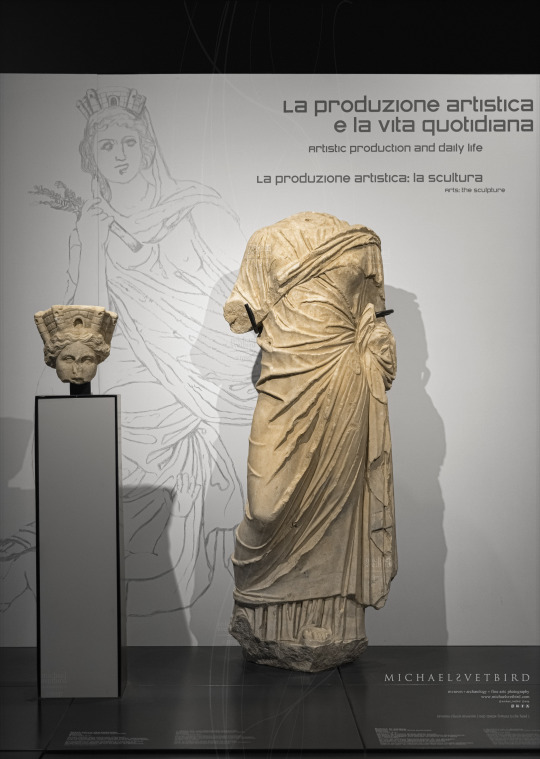
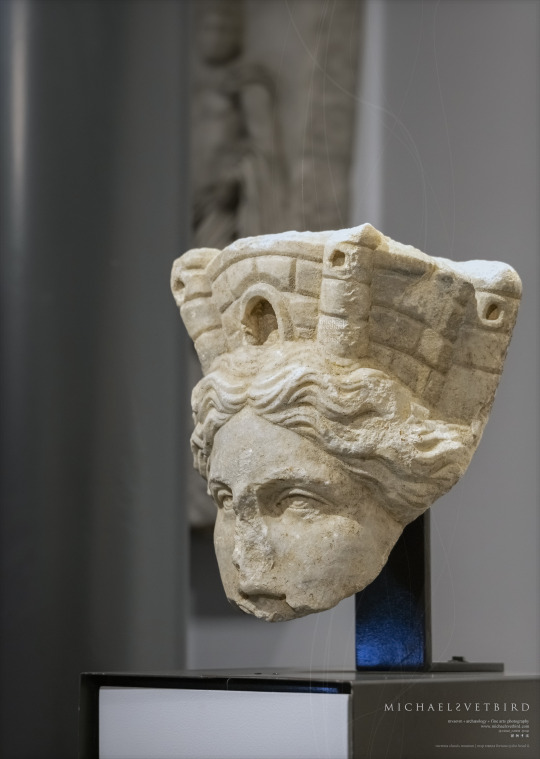
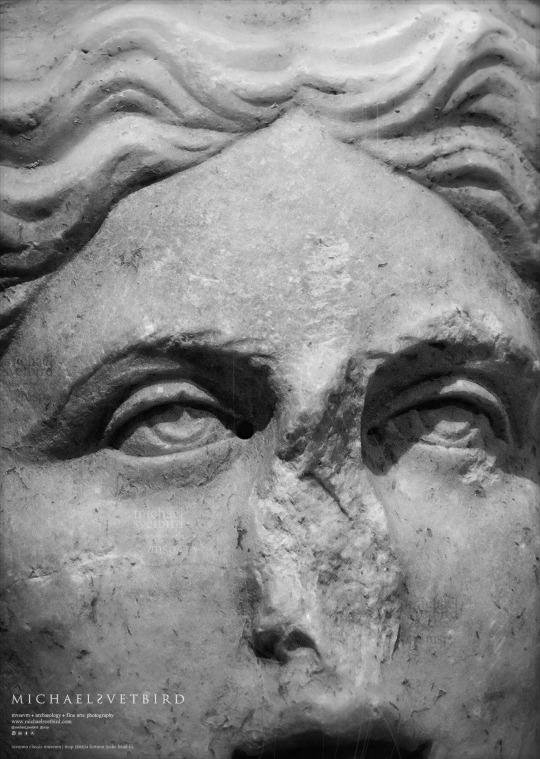
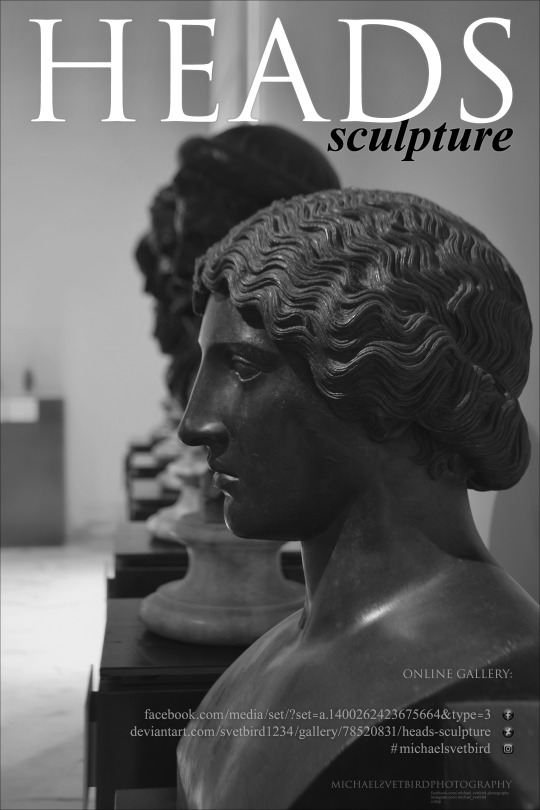
FORTUNA | TYCHE: Marble Head of the Goddess Fortuna [Tyche] From Classe, Ravenna, Excavation in the harbour area 2 AD. "The Goddess is crowned with a turret-crown, a detail that characterises her as the tutelary deity of a city." [Txt ©MCR]
Right [pic 1]: Statue of a Woman From Classe, Ravenna, Excavation in the harbour area 1 AD. "Headless statue of a woman with a tunic [chiton] and a mantle [hymation]. The woman stands on her left foot wearing a sandal. Maybe the figure was a part of a group of sculptures that decorated a public building, most probably located in Ravenna." [Txt ©MCR]
Museo Classis Ravenna | MCR [Ground fl.] • Web : https://classisravenna.it/?lang=en • IG : @ museoclassis
MCR | Michael Svetbird phs©msp | 22|02|24 5900X4200 600 [I., II.] The photographed objects are collection items of MCR, photos are copyrighted [non commercial use | sorry for the watermarks]
📸 Part of the "HEADS.Sculpture" MSP Online Photo-gallery:
👉 D-ART: https://www.deviantart.com/svetbird1234/gallery/78520831/heads-sculpture
👉 FB Album: https://www.facebook.com/media/set/?set=a.1400262423675664&type=3
.
#ravenna#classis ravenna#classis#archaeological museum#history museum#ancient sculpture#roman art#head#heads#sculpture#portrait#antiquity#archaeology#ancient#museology#museum#art history#antiquities#mythology#heritage#fortuna#tyche#τύχη#goddess#photo gallery#art photography#sculpture photography#archaeology photography#museum photography#michaelsvetbird
11 notes
·
View notes
Text
Imperial Navy (Imperii Stella Classis)
The Imperial Navy is the most recent evolution of the Imperium’s naval forces, having transitioned from the terrestrial-bound Imperial Fleet when humanity finally slipped the bonds of Terra. Originally the Imperial Systems Patrol, the Navy would be nearly annihilated following the outbreak of the 1st Aberinian War in 2387. Going up against a civilization that had been waging war between the stars for nearly 15,000 years, the ISP was easily outclassed, and took horrendous losses during the Imperium’s early defeats.
The Navy would recover under the leadership of Pleb-Praefectus Navis Gaius Manserius and his friend, eventual Lord Admiral Alistair Saint-James. Manserius would win the first victory in Imperial Navy history over Port Avinius. Combined with Herius Victus’ devastating counterattack, he would lead the Navy to eventual victory against the Aberinians, though he would not live to see the end of the war.
Victory brought with it a massive program to redevelop the Navy into a proper fighting force. Taking lessons from the war, and observations from other naval forces around the galaxy as humanity slowly got to know the galactic community, Alistair Saint-James proposed a radical redesign of every single part of the Navy, though he retired from his post only a few weeks after peace was declared. It wouldn’t be until 2403 that Emperor Valerian convinced Saint-James to return to command and oversee the reforms, though it came at the cost of their personal relationship.
The first step was to prepare the Navy for the Imperium’s expansion. Humanity had lucked out, surrounded as Terra was by highly habitable worlds perfect for colonization. Saint-James knew the Imperium as it was would soon be dwarfed, and so he envisioned a modular Navy, one able to respond to expansion organically.
Dividing up Imperial space into the 12 Zona Responsabilitatis, the Zones of Responsibility which would encompass every inch of Imperial space. To each zone, he assigned a Fleet, an independent body which would be given complete control of all military assets inside its Zone, including logistical and manufacturing centers. Each Fleet would be in charge of producing its own ships, training its own officers, and supporting its own operations, while carrying out the orders issued by the Senatorum Humanus and the Admiralty Board. Each Fleet would additionally be assigned a headquarters world, known as FleetCOMs, who would report to the Central Naval Commission based on the Imperium’s military hub, Ravenna. The headquarters worlds are, from 1st Fleet to 12th, Lepcis Magna, Cyprus Cygni, Tremaine (moved to Xhatri in 2680 following Tremaine’s destruction), Couermain’s Landing, Anis Abbasis, Vingimella, Vae Varitus, Magnus’ World, Arrettium, Gaulterius, Xanathos, and Terra itself.
These headquarters worlds are massive nexuses of Imperial naval might, each playing host to huge orbital drydocks and deepspace shipyards, massive gunforts and orbital bastions, and countless Imperial warships. From these worlds, the Fleets dispatch forces as necessary to patrol and maintain their Zones.
Each Fleet is commanded by two Lords Admiral, 24 of which make up the Admiralty Board, the highest station in the Imperial military. Appointment to the board requires the unanimous approval of all 23 sitting members, plus the Emperor, who retains sole civilian oversight over the Board. Each Fleet’s admirals retain overall command of their respective halves of the Fleet, along with attendant shipyards, fortifications, starstations, and planetary outposts.
Fleet organization is broken down similarly to the Imperial Legions, with large formations of set amounts of ships being broken down further as deployments require. Each Fleet numbers 480 ships of the line, with a further 2200 escort vessels, to act as screening ships for the larger capital vessels. Fleets are first broken down into Main Battlegroups, numbering 120 ships in total. These are gargantuan formations, often including the massive, awe-inspiring supercarriers and superdreadnaughts that serve as fleet flagships. Main Battlegroups are almost never deployed in their entirety, but mostly stationed over Fleet capital worlds or important shipyards. The deployment of even a single Main Battlegroup indicates an extreme reaction from the Imperial military, a reaction almost never seen outside of the outbreak of a war. Each Battlegroup is commanded by a Fleet Admiral.
From there, Fleet formations can fluctuate in size, allowing flexibility to respond to threats. The next-largest formation is the Task Force, numbering 20 ships in total. Actual ship composition may change, but these are frontline units and typically include at least one battlecruiser or heavy carrier, although some may even see the deployment of a supercarrier. Typically intended for long range missions, the Commander in charge of each Task Force is given a significant amount of leeway to accomplish their orders.
Sometimes, Fleets require rapid, heavy firepower deployed to a combat zone, which is where the Flotilla, numbering 20 ships also, comes in. Typically spearheaded by a superdreadnaught or squadron of battleships, Flotillas are specialized, heavy duty formations intended to break blockades, smash system fortifications, or overrun frontier raiders with overwhelming force. Led by a Commodore, the Flotilla is becoming increasingly scarce as the Imperium’s need for superheavy warships has lessened following the end of the Unification Wars.
Below the Task Force are the various squadrons, strike groups, and wolfpacks that make up the rest of the Navy’s structure. Typically, units of this size, around 4-10, aren’t deployed on their own, but make up groupings of ship classes inside larger formations. Destroyer wolfpacks are common, used to strip the shielding from enemy capital ships so the heavier guns of the Imperium’s line ships can finish them off. These units are invariably led by a Captain, Third Grade.
Individual ship command is given to the 480 captains that make up each Fleet’s General Officer Corps. While all ranks below Captain are earned through promotion after enlistment, captain candidates must be nominated by a superior officer. Candidates are then sent across the Imperium to the various naval academies and institutes dotting its worlds.
Imperial naval doctrine has changed much from the early days of the ISP. No pretense is made that the Navy can protect every world equally all the time, given the sheer size and scale of the empire. Instead, the Navy doesn’t even try, relying on its ability to detect and rapidly respond to hostile incursions to deploy quick reaction forces from the various Navy garrisons. In the event of full fledged invasions, Imperial strategy calls for a general retreat from the border to regroup at the nearest Fleet world, and launch counterattacks from there. This doctrine means that many an enemy has been fooled into thinking they have the Imperium on the back foot in the early days of a war, causing them to overextend, sending ships straight into the waiting maw of a fully gathered Fleet.
Additionally, the Navy maintains constant patrols into the Imperial frontier. Both humanitarian missions and displays of Imperial power, frontier patrols are expected to provide aid to the tens of thousands of human and alien colony worlds and unaligned systems that make up the frontier, and respond to rogue or hostile forces seeking to pray on vulnerable, independent worlds. Because the Imperium itself no longer sponsors colony missions, newly established worlds do not automatically gain admittance, letting these patrols act as ambassadors of goodwill, or, in the case of strategically important systems, methods of unspoken intimidation, meant to encourage applications for admittance into the Imperium.
Since the end of the 1st Aberinian War, the Imperium has worked hard to develop the Navy, making use of technology reverse engineered from the two remaining alien Harbinger vessels to leapfrog humanity’s military capabilities. This significant investment has paid off massively, and the Navy has never lost a war. Though involved in many conflicts, and becoming victim to several defeating tactical defeats, the Navy has never actually lost a military conflict, with several of its formations, especially the 3rd Fleet, becoming famous even outside of Imperial space for their sheer stubbornness and lethality. Other notable Fleets include the 12th, on permanent loan to the Union of Interstellar States’ peacekeeping forces, the 7th, the only Imperial Fleet to serve under a non-Imperial officer when Benden Voidmaster Fhiras Theth was given command of the Fleet during the Unification Wars, and the 1st Fleet, which has never left the Sol System, stationed on permanent guard duty over humanity’s home.
#the victusverse#next few entries are gonna be a mix of narrative (yall are getting space battles) and in depth stuff on the Navy#specifically ships navy history and role in civilian life
5 notes
·
View notes
Photo

“When the general Stilicho and the young Emperor Honorius (395-423) decided to move his capital to Ravenna, Alaric, the feared chieftain of Gothic forces, had recently broken through the Alpine frontiers of Italy and was about to threaten the imperial government based in Milan. Milan's walls were too extensive to defend effectively, while Ravenna's position among the marshes, lakes and tributaries of the Po estuary provided a natural protection, reinforced by strong walls; it also had direct access, via its nearby port of Classis (modern Classe), to Constantinople, as well as to supplies of the trading centres of the East Mediterranean. This was an inspired strategic redeployment. Laws issued in Ravenna in December 402 record the initial stages of this relocation, which made it the new capital city.”
Source: Ravenna by Judith Herrin
14 notes
·
View notes
Text
Today, the Church remembers St. Apollinaris.
Ora pro nobis.
According to tradition, he was a native of Antioch in Roman Province of Syria. As the first Bishop of Ravenna, he faced nearly constant persecution. He and his flock were exiled from Ravenna during the persecutions of Emperor Vespasian (or Nero, depending on the source). On his way out of the city he was identified, arrested as being the leader, tortured and martyred by being run through with a sword.
He was made Bishop of Ravenna, Italy, by Saint Peter himself. The miracles he wrought there soon attracted official attention, for they and his preaching won many converts to the Faith, while at the same time bringing upon him the fury of the idolaters, who beat him cruelly and drove him from the city. He was found half-dead on the seashore, and kept in concealment by the Christians, but was captured again and compelled to walk on burning coals and a second time expelled. But he remained in the vicinity, and continued his work of evangelization.
We find him then journeying in the Roman province of Aemilia [in Italy]. A third time he returned to Ravenna. Again he was captured, hacked with knives, had scalding water poured over his wounds, was beaten in the mouth with stones because he persisted in preaching, and was flung into a horrible dungeon, loaded with chains, to starve to death; but after four days he was put on board a ship and sent to Greece. There the same course of preachings, miracles and sufferings continued; and when his very presence caused the oracles to be silent, he was, after a cruel beating, sent back to Italy.
All this continued for three years, and a fourth time he returned to Ravenna. By this time Vespasian was Emperor, and he, in answer to the complaints of the pagans, issued a decree of banishment against the Christians. Apollinaris was kept concealed for some time, but as he was passing out of the gates of the city, was set upon and savagely beaten, probably at Classis, a suburb, but he lived for seven days, foretelling meantime that the persecutions would increase, but that the Church would ultimately triumph. It is not certain that he was one of the seventy-two disciples of Christ, as has been suggested. The precise date of his consecration cannot be ascertained, but he was Bishop of Ravenna for twenty-six years.
Almighty God, by whose grace and power your holy martyr Apollinaris triumphed over suffering and was faithful even to death: Grant us, who now remember him in thanksgiving, to be so faithful in our witness to you in this world, that we may receive with him the crown of life; through Jesus Christ our Lord, who lives and reigns with you and the Holy Spirit, one God, for ever and ever.
Amen.

2 notes
·
View notes
Note
Happy Blurbo Blursday, fren!
Which of your blurbos cares the most about their clothes? Why? And what's their ideal fit?
hi fren! happy belated blorbo day!
Isolde is a close second but her style tends to be a bit more conservative and with-the-trends.
I'd have to go with Lylira, who I don't think I've mentioned on this blog before. Her style is, well, imagine a cross between Snow White from Mirror, Mirror and Ravenna from Snow White and the Huntsman. It is very extravagant and defined by that classy villain-esque blood-red lip. She is a child-empress whose regency council would do anything to keep themselves in power so she dresses to send a message. I am the empress, not you. And she tries to look a little scary.
I have to give an honourable mention to Sylah though. Her rebel poster-girl outfit is iconic. Army boots and low-rise cargo pants, an automatic pistol slung on each hip, a triangle knife on her belt, a crop top, fingerless gloves, a high ponytail, a green dragon ear-cuff, a metal collar, and Frankenstein-inspired vfx makeup. She also has a Cinderella moment where she crashes a royal ball in a florescent orange two-piece dress (a colour no one else is wearing) and steals the first (and last) dance with the crown prince.
0 notes
Text
Popilia road: Rimini - Hatria
by Giovanni Caselli Separating from the Via Aemilia, just beyond Ariminum, the Via Popilia skirted the Adriatic following the same course as the current SS16. Beyond the Rubicon it passed on the ‘bolt’ of the Ravenna lagoon, up to Classis and Ravenna. Ravenna was situated on a strip of sand which separated its lagoon which from the height of Cesena reached up to the Valli di Comacchio. According…

View On WordPress
0 notes
Text
Mother Miranda & Ravenna
I noticed a few interesting similarities between Mother Miranda and Ravenna from Snow White and the Huntsman / The Huntsman: Winter's War that I want to share with y'all. They not only have in common that they are stunning blonde beauties. 😏

1) The talons! Ravenna wears this hand jewelry on two fingers. Also, in one scene she eats a bird's heart, which reminded me of the scene where Miranda rips Ethan's heart out.

2) Shape shifting ... I don't think I need to say much about that. 👀

3) Dissolving into crows - This one is also pretty obvious.

4) Black roots, tentacles ... Something growing out of Ravenna's back. (Not to mention that Ravenna and Miranda are both ruthless and cruel and use these against other people. 🙃)

5) Ravenna doesn't have a gold mask, but she and Miranda both share a classy gold/black design in clothing and accessories.

6) Dark substance running from eyes – or mouth. 🧐

7) In addition to their cruelty, both have charming manipulative personalities. Both seem delusional. In the 2nd movie, it seems that Ravenna has gone crazy because of an unfulfilled desire to have children. Miranda does everything she can to win back her lost daughter Eva.

8) Ravenna and Miranda have a younger appearance than they actually are. (It is not confirmed that the hag is Miranda's true appearance. I used the image as a placeholder, please don't hit me. 😆)

#resident evil#resident evil village#mother miranda#charlize theron#ravenna#snow white and the huntsman#comparison#anaylsis#character design#gorgeous women#thoughts
45 notes
·
View notes
Photo

Today we celebrate our Holy Father Apollinairis, Bishop of Ravenna. Saint Apollinaris was a native of Antioch who accompanied the Apostle Peter to Rome and was sent by him to Ravenna. Apollinaris was well read in Greek and Latin. In Ravenna his teaching and miracles brought hostile attention to him, resulting in his being persecuted and driven from the city by the pagans. Remaining in the vicinity of Ravenna he continued to evangelize until he again was compelled to flee. After being expelled, Apollinaris journeyed to Dalmatia, Pannonia, Thrace, and Corinth where he preached for three years. He then returned to Ravenna to preach, perform miracles, and suffer further persecutions. He was martyred during the rule of Vespasian on July 23, in the year 78, after an episcopate of 28 years. He died in the port town of Classis, where he was buried. May he intercede for us always + Source: https://orthodoxwiki.org/Apollinaris_of_Ravenna (at Ravenna, Italy) https://www.instagram.com/p/CgVVQVFvQ2v/?igshid=NGJjMDIxMWI=
12 notes
·
View notes
Text
Saint of the Day – 21 November – Saint Maurus of Cesena (Died 946) Bishop
Saint of the Day – 21 November – Saint Maurus of Cesena (Died 946) Bishop
Saint of the Day – 21 November – Saint Maurus of Cesena (Died 946) Bishop, Monk, Abbot. nephew of Pope John IX. Born in Rome, Italy and died on 21 November 946 in Cesena, Flaminia, Italy of natural causes. Patronage – against blindness. Also known as – Maur, Mauro. Maurus was Ordained then became a Benedictine Monk at Classis in Ravenna, Italy. Having served as Abbot of the Monastery of Classis,…

View On WordPress
2 notes
·
View notes
Photo
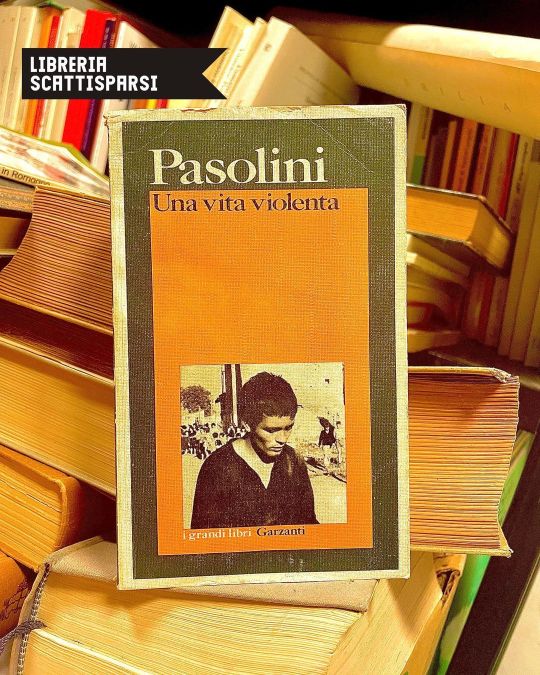
...difficile commentare un libro come questo che racconta una realtà così dura...va letto per conoscere un pezzo di Italia solitamente ignorato...Una vita violenta è il neorealismo in letteratura. Una lettura bellissima, coinvolgente, profondamente vera...L'amore di Pasolini per le classi più basse, per chi non ha nulla da perdere, per i ragazzi di strada che vivono di violenza e piccoli soprusi, dimenticati dall'alto. C'è tutto questo ma anche tanto altro. Una ricerca linguistica attentissima, una storia d'amore appassionata, una serie di personaggi strepitosi ma anche la normalità del quotidiano, gli scontri politici del dopoguerra...Potrebbe sembrare un banale romanzo di denuncia sociale, ma così non è...alla denuncia si affianca il romanzo...bello da leggere per la drammaticità presente in ogni riga e da assimilare come pezzo di una letteratura importante di un’Italia che, allora, in pieno boom economico sapeva riflettere, e denunciare, sui suoi mali e le sue debolezze...#instabook #igersravenna #ig_books #libri #instaravenna #consiglidilettura #bookstagram #booklovers #domenicaaperto #narrativa #booktubers #pierpaolopasolini (presso Libreria ScattiSparsi Ravenna) https://www.instagram.com/p/CfGFTsIoLb7/?igshid=NGJjMDIxMWI=
#instabook#igersravenna#ig_books#libri#instaravenna#consiglidilettura#bookstagram#booklovers#domenicaaperto#narrativa#booktubers#pierpaolopasolini
2 notes
·
View notes
Text

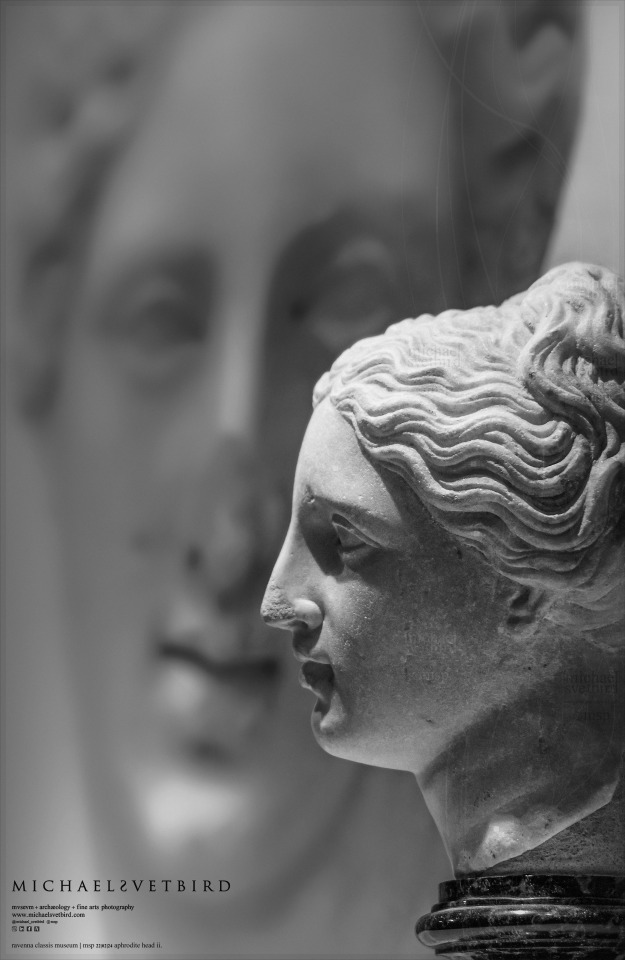

APHRODITE: Head | Roman copy after a Greek model White marble 1 AD Unknown provenance.
Museo Classis Ravenna | MCR [Ground fl.] • Web : https://classisravenna.it/?lang=en • IG : @museoclassis
MCR | Michael Svetbird phs©msp | 22|02|24 6300X4100 600 [I.] The photographed object is collection item of MCR, photos are copyrighted [non commercial use | sorry for the watermarks]
📸 Part of the "PROFILE Shots" MSP Online Photo-gallery:
👉 D-ART: https://www.deviantart.com/svetbird1234/gallery/89669842/profile-shots
👉 FB Album: https://www.facebook.com/media/set/?set=a.2017689605266273&type=3
👉 PINTEREST: https://www.pinterest.com/Michael_Svetbird/profile-shots
.
#ravenna#classis ravenna#classis#archaeological museum#history museum#ancient sculpture#roman art#profile#sculpture#portrait#antiquity#archaeology#ancient#museology#museum#art history#antiquities#mythology#heritage#aphrodite#��φροδίτη#afrodite#goddess#profile shots#photo gallery#art photography#sculpture photography#archaeology photography#museum photography#michaelsvetbird
4 notes
·
View notes
Text
SAINT OF THE DAY (January 8)

St. Apollinaris was one of the first great martyrs of the church.
He was made Bishop of Ravenna by St. Peter.
The miracles he conducted in Ravenna soon attracted official attention, for they and his preaching won many converts to the faith.
However, at the same time, his words and works brought upon the fury of the pagan people who beat Apollinaris cruelly on several occasions.
During one beating, Apollinaris was cut with knives, scalding hot water poured over his wounds then put on a ship to be sent to Greece.
In Greece, the same course of preachings, miracles and sufferings continued.
In fact, after a cruel beating by Greek pagans, he was sent back to Italy.
When Emperor Vespasian issued a decree of banishment against the Christians, Apollinaris was kept hidden for some time but as he was leaving, passing through the gates of the city, he was attacked and savagely beaten.
He lived for seven days, foretelling that the persecutions would increase but that the Church would ultimately triumph.
----------
Apollinaris of Ravenna is a Syrian saint, whom the Roman Martyrology describes as:
"a bishop who, according to tradition, while spreading among the nations the unsearchable riches of Christ, led his flock as a good shepherd and honoured the Church of Classis near Ravenna by a glorious martyrdom."
7 notes
·
View notes
Text
July 20 is the feast day of St. Apollinaris, bishop and martyr

Source of picture: https://anastpaul.com
Life of St. Apollinaris
According to tradition, Saint Peter sent Apollinaris to Ravenna, Italy, as its first bishop. His preaching of the Good News was so successful that the pagans there beat him and drove him from the city. He returned, however, and was exiled a second time. After preaching in the area surrounding Ravenna, he entered the city again. After being cruelly tortured, he was put on a ship heading to Greece. Pagans there caused him to be expelled to Italy, where he went to Ravenna for a fourth time. He died from wounds received during a savage beating at Classis, a suburb of Ravenna. A beautiful basilica honoring him was built there in the sixth century.
Source: https://www.franciscanmedia.org/saint-apollinaris/
Prayer in Honour of St. Apollinaris
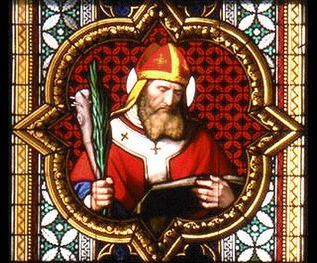
Source of picture: https://365saints.blogspot.com
Direct your faithful, Lord, in the way of eternal salvation, which the Bishop Saint Apollinaris showed by his teaching and martyrdom, and grant, through his intercession, that we may so persevere in keeping your commandments as to merit being crowned with him. Through our Lord Jesus Christ, your Son, who lives and reigns with you in the unity of the Holy Spirit, one God, for ever and ever. Amen.
Source: https://prayers4reparation.wordpress.com
#saints#prayer#St. Apollinaris#bishop#martyr#Prayer in Honour of St. Apollinaris#God#Jesus#Christ#Jesus Christ#Father#Son#Lord#Holy Spirit#Holy Trinity#christian religion#faith#hope#love#direct your faithful
2 notes
·
View notes
Text
Classis: la visita al nuovo museo di Ravenna tra mare e stratigrafia storiografica
Classis: la visita al nuovo museo di Ravenna tra mare e stratigrafia storiografica
Il 1 dicembre 2018, a Ravenna, ha avuto luogo l’apertura del nuovo fulcro del parco archeologico di Classe: il Classis, museo della città e del territorio.
Classis Ravenna – Zuccherificio
Tutta la città ha pazientemente aspettato e guardato all’apertura di questo nuovo e “speciale” spazio espositivo come un passo verso qualcosa di modernoe come una sorta di nuova cattedrale atta a conservare e,…
View On WordPress
0 notes
Link
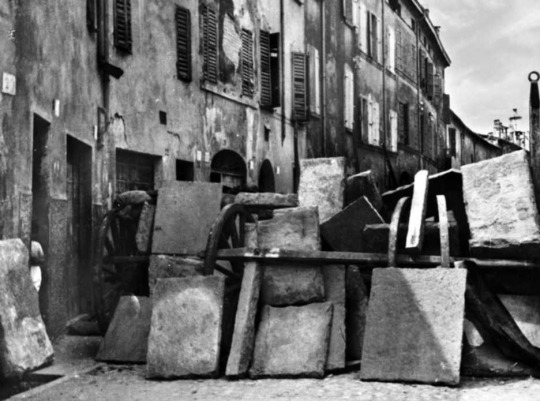
In seguito all’inasprirsi delle violenze fasciste contro le organizzazioni e le sedi del movimento operaio e democratico, l’Alleanza del Lavoro (organo di un ampio fronte sindacale) proclamò per il 1° agosto 1922 uno sciopero generale nazionale in “difesa delle libertà politiche e sindacali”. Contro la mobilitazione dei lavoratori si scatenò la violenza delle squadre fasciste lungo tutta la penisola. L’Alleanza del Lavoro sospese lo sciopero il 3 agosto, ma le aggressioni aumentarono e solo in poche città fu organizzata la resistenza alle azioni delle camicie nere. Le spedizioni punitive ebbero così un totale successo con la distruzioni di circoli, cooperative, sindacati, giornali ed amministrazioni popolari. A Parma, sola eccezione, gli sviluppi dello sciopero furono ben diversi: la città divenne teatro di una resistenza armata alle squadre fasciste che, dopo cinque giorni di combattimenti, risultò vittoriosa. I lavoratori avevano risposto compatti allo sciopero e, forti delle tradizioni locali del sindacalismo rivoluzionario, mostrarono ancora una volta grande capacità di mobilitazione e di combattività.
Parma era “rimasta quasi impermeabile al fascismo” ed inoltre, dal luglio 1921, operava contro le aggressioni delle squadre nere l’organizzazione armata degli Arditi del Popolo, costituita dal deputato socialista Guido Picelli, che reclutava giovani lavoratori soprattutto tra le fila del socialismo radicale e dell’anarchismo. Nei giorni di agosto furono mobilitati dal Partito Fascista per la spedizione su Parma circa 10.000 uomini, giunti dai paesi del Parmense e dalle province limitrofe; a comandarle venne inviato Italo Balbo, già protagonista di analoghe spedizioni militari a Ravenna e a Forlì.
Mentre a livello nazionale lo sciopero si esauriva e il fronte democratico veniva sconfitto, a Parma la resistenza si faceva sempre più tenace e, nei borghi dietro le barricate popolari, i poteri passarono al direttorio degli Arditi del Popolo e al suo comandante Picelli.
All’alba del 2 agosto 1922 affluiscono a Parma circa 15 mila squadristi provenienti da tutta l’Emilia, dal Veneto, da parte della Toscana, dal Mantovano e dal Cremonese. Il prefetto e il questore ritirano tutta la forza pubblica dai quartieri a rischio (l’Oltretorrente e il Naviglio), mentre gli arditi del popolo, – che da giorni attendevano la spedizione punitiva – si organizzano:
I caposquadra – racconterà Picelli dodici anni più tardi – scelti fra gli operai militari, ebbero il compito dell’addestramento degli uomini, mentre gli addetti ai servizi speciali furono incaricati di mantenere il contatto coi soldati dei reggimenti di permanenza a Parma per il rifornimento di armi e munizioni. […] Il Comando degli «Arditi del Popolo» appena ebbe notizia dell’arrivo dei fascisti, convocò d’urgenza i capi squadra e capi gruppo e dette loro disposizioni per la costruzione immediata di sbarramenti, trincee, reticolati, con l’impiego di tutto il materiale disponibile. All’alba, all’ordine di prendere le armi e insorgere, la popolazione operaia scese per le strade, impetuosa come le acque di un fiume che straripi, con picconi, badili, spranghe ed ogni sorta di arnesi, per dar mano agli «Arditi del Popolo» a divellere pietre, selciato, rotaie del tramway, scavare fossati, erigere barricate con carri, banchi, travi, lastre di ferro e tutto quanto era a portata di mano. Uomini, donne, vecchi, giovani di tutti i partiti e senza partito furono là; fusi in una sola volontà di ferro: resistere e combattere.
Viene quindi divisa la città in quattro settori: due nell’Oltretorrente (Nino Bixio e Massimo D’Azeglio) e due in Parma nuova (Naviglio e Aurelio Saffi). Le squadre di arditi del popolo, composte da otto-dieci uomini, si suddividono le zone d’operazione sulla base dell’estensione territoriale dei quartieri. Ventidue sono impegnate in Oltretorrente, sei nel Naviglio e quattro nel rione Aurelio Saffi: circa trecento uomini, solo la metà dei quali armati di fucili modello 1891, moschetti, pistole d’ordinanza, rivoltelle automatiche e bombe SIPE. Nei punti ritenuti tatticamente importanti vengono rafforzate le difese e gli sbarramenti minando il sottosuolo; i campanili vengono numerati e utilizzati come osservatorii. I poteri passano nelle mani del Comando degli Arditi del popolo, costituito da un ristretto numero di operai (eletti dalle squadre) tra i quali viene ripartita la direzione delle branche di servizio: “difesa e ordinamento interno”, “approvvigionamenti” e, infine, “sanità”. I commercianti e le classi medie simpatizzano con gli antifascisti e mettono a loro disposizione l’occorrente (viveri e quant’altro).
Dall’altra parte delle barricate il ritratto ora esposto viene confermato. Nel suo stile telegrafico posticciamente tardo-futurista, il comandante supremo della spedizione punitiva (appena giunto da Ferrara), ricorderà così la situazione:
I dirigenti di Parma mi danno l’antefatto. I fascisti locali pochi: la città è rimasta quasi impermeabile al Fascismo: invece nella provincia la conquista fascista è quasi completa. Lo sciopero non potè essere impedito in città per la debolezza delle nostre forze. Fu più o meno generale. […] Parma divisa secondo i vecchi confini dalle fazioni in lotta: l’oltretorrente completamente in mano dei rossi. La popolazione asserragliata nelle case trasformate in fortezze, con abbondanza d’armi e di tiratori scelti sui tetti: le strade bloccate da barricate col materiale delle scuole e delle chiese.
E, a proposito dello schieramento avversario, Balbo, dopo aver osservato genericamente che il fulcro della resistenza sono i comunisti, annota nel suo diario:
Forze avversarie. – Hanno solidarizzato con i rivoltosi: la Camera del lavoro sindacalista, con Alceste De Ambris alla testa. […] La Camera del lavoro socialista […]. Molti popolari. Partecipano alla resistenza sovversiva persino alcuni preti in sottana che hanno offerto viveri e banchi di chiesa per gli sbarramenti. I giovani popolari sono capeggiati da un noto avvocato della città. Frazioni di partiti borghesi, legati alla democrazia nittiana […]
In effetti lo schieramento politico che appoggia i rivoltosi è assai ampio. Ma una tale ampiezza gli deriva dall’essere uno schieramento sociale di popolo, non certo un blocco di sigle, molte delle quali contrarie a qualsiasi tentativo di risposta violenta al fascismo. I socialisti, i comunisti e ancor più i popolari, che appoggiano attivamente la rivolta, lo fanno in dissenso, o quantomeno discostandosi, dall’indirizzo delle rispettive direzioni politiche. (Come sottolinea Dianella Gagliani (che ha raccolto alcune testimonianze, tra le quali quella di Dante Gorreri), la mediazione raggiunta dai comunisti parmensi con la “Centrale” fu quella di partecipare alla difesa unitaria con proprie squadre, subordinate al Comando degli Arditi del popolo. “Gruppi comunisti avevano il controllo militare di alcune vie, sostanzialmente all’interno dell’organizzazione degli arditi del popolo” (cfr. D. Gagliani, Arditi del popolo, in AA.VV., Dietro le barricate, cit., p. 166). La partecipazione come combattenti di operai e, in generale, di cittadini che facevano riferimento al PPI ci viene confermata, oltreché dallo stesso Picelli (in tempi non sospetti, cioè prima del VII congresso dell’IC), dalla morte del consigliere popolare del PPI Ulisse Corazza (colpito al capo da una fucilata dopo essersi presentato – come scrisse Picelli – qualche ora prima, “col proprio moschetto a un caposquadra, per chiedere di partecipare al combattimento a fianco degli «Arditi del Popolo»”). Anche la partecipazione dei sacerdoti è confermata da più parti: il parroco di San Giuseppe, ad esempio, mise a disposizione i banchi della sua chiesa per costruire una barricata, ma si oppose fermamente a Picelli quando questi gli chiese di issare la bandiera rossa sul campanile (cfr. Pietro Bonardi Cattolici e chiesa nella lotta politica, in AA.VV., Dietro le barricate, cit., pp. 271-72). Anche Balbo nel suo diario, dopo aver annotato la morte di Ulisse Corazza, scrive: “I fascisti hanno visto un grosso prete rubicondo agitarsi dietro le barricate dei sovversivi a portare panche e sedie di chiesa. Momento di aberrazione. Contrasto con le parole cristiane di Monsignor Conforti [l’arcivescovo di Parma che la sera prima era andato a trovare Balbo con l’intento di pacificare le parti]” (I. Balbo, cit., p. 131).)
Le uniche forze politico-sindacali che sostengono apertamente la rivolta (oltre al nucleo “picelliano” della Camera confederale del lavoro di via Imbriani) sono quelle dei sindacalisti rivoluzionari dell’UldL (con sede presso la Camera del lavoro di Borgo alle Grazie, guidata da Vittorio Picelli, fratello di Guido), dell’Unione sindacale parmense (aderente all’USI) e dei libertari (UAI).
La difesa di Oltretorrente è una lotta di popolo vera e propria. La divisione tra combattenti e ausiliari non-combattenti, usuale per qualsiasi conflitto civile (si pensi alla Resistenza), non è in questo caso ben determinabile. Accanto ai circa trecento arditi del popolo c’è infatti la quasi totalità della popolazione. Come annota Picelli, dopo aver descritto la situazione nel borgo del Naviglio:
Anche nell’Oltretorrente i servizi andarono man mano migliorando: requisizione e distribuzione di viveri, posti di medicamento, cucine, vigilanza, informazione, rafforzamento delle costruzioni difensive. Grande fu la partecipazione delle donne, le quali accorsero ovunque a prestare l’opera loro preziosissima e ad incitare. […] Un elemento molto importante del successo nella lotta armata è la certezza di vincere. È interessante osservare come questa «certezza» fosse in ognuno assoluta; nessuno ebbe il più piccolo dubbio. Nelle case si attese alla fabbricazione di ordigni esplodenti, di pugnali fatti con lime, pezzi di ferro, coltelli, e alla preparazione di acidi Dalle finestre di una delle casupole di Borgo Minelli, una ragazza di diciassette anni, tenendo levata in alto la scure ed agitandola, gridò ai compagni sulla via: «se vengono io sono pronta!». Alle donne vennero distribuiti recipienti pieni di petrolio e di benzina, poiché in base al piano difensivo, nel caso in cui i fascisti fossero riusciti ad entrare in Oltretorrente, il combattimento si sarebbe svolto strada per strada, vicolo per vicolo, casa per casa, senza risparmio di sangue, con lancio di liquidi infiammabili, contro le camicie nere e sino all’incendio e alla distruzione completa delle posizioni.
Notizie, queste, confermate da Balbo che così descrive, lasciando anche trasparire una certa dose di ammirazione, l’organizzazione della difesa in Oltretorrente:
Partecipano alle azioni le donne e i ragazzi. Ora per ora le trincee vengono approfondite e perfezionate. Servizio di sentinella. Operai che si danno il turno. Disciplina militare. Picelli ha il suo quartier generale al centro dell’oltretorrente. Arditi del popolo militarizzati. Stato maggiore. Disciplina di guerra. […] Molti operai sono in divisa di ex soldati col relativo elmetto. I ragazzi sono in gran parte adibiti a spari a tradimento che colpiscono i fascisti persino nella piazza maggiore della città. Mentre i difensori sono di guardia alle trincee, le donne, mobilitate anch’esse, preparano il rancio. Sono coadiuvate da gruppi di cucinieri. Le popolane portano alle cucine antifasciste pane, vino, frutta, lardo, patate. Il rancio viene distribuito due volte al giorno. L’ora del rancio è fissata con uno squillo di tromba. Altri squilli regolano l’ora della ritirata e l’ora della sveglia, nonché gli allarmi.
In realtà, contrariamente a quanto afferma Balbo, i giovanissimi (come il quattordicenne Gino Gazzola, ucciso inerme da un cecchino fascista) sono impiegati sui tetti e sui campanili in servizio di pattugliamento, mentre le armi e le munizioni in possesso degli insorti non sono poi molte. Anzi, alcuni di loro, utilizzando un espediente di rimembranza garibaldina, durante la notte salgono sui tetti armati di tubi e bastoni impugnati a mo’ di fucile.
Il rapporto con i soldati di truppa è un altro aspetto saliente della condotta dei resistenti. Il tentativo di occupare il quartiere popolare da parte del generale Lodomez – al quale nel frattempo erano passati i poteri – fallisce per due motivi: per la netta opposizione del Comando degli Arditi del popolo al tentativo mediatorio del comitato cittadino dell’AdL e a qualsiasi richiesta di smobilitazione avanzata dagli ufficiali (con la promessa che i fascisti si sarebbero poi allontanati dalla città), ma soprattutto perché i difensori accolgono i soldati del generale letteralmente a braccia aperte. (Come nota Picelli: “Gli ufficiali protestarono dicendo che avevano l’ordine; ma gli operai non cedettero. Anch’essi avevano un ordine! Il contegno dei soldati fu tale da non incoraggiare gli ufficiali ad insistere troppo. Due ore dopo il battaglione venne ritirato. Le manovre di compromesso furono sventate e il tentativo di disarmare gli operai fallì” )
Un Balbo indignato scrive infatti:
Alle 14 le truppe del generale Lodomez entravano nei quartieri occupati dai sovversivi con mitragliatrici e con due cannoni. L’apparato di forze era grande. Si riteneva accanita la resistenza degli avversari. Invece non è stato sparato un colpo di fucile. Gli operai stessi hanno aiutato i soldati a sgombrare le barricate e a disfare le trincee. Da tutte le viuzze dell’oltre-torrente le masse sovversive accorrevano incontro ai soldati gridando «viva l’esercito proletario». Applausi senza fine agli ufficiali. Molti soldati abbracciati dalle donne che offrivano vino. Segni di vittoria in tutti i quartieri che fino a pochi momenti prima erano in stato di guerra. Le truppe, i carabinieri e le guardie regie non hanno sequestrato che tre o quattro moschetti. […] In una piazzetta dell’oltretorrente è stata scodellata ai soldati una polenta di 15 chili. Non sono mancate le musiche e i balli popolari.
Il mistero di questa manifestazione di giubilo e di solidarietà con l’Esercito è stato subito svelato. Il prefetto Fusco è sceso a patti con gli arditi rossi di Picelli. […] Si è presentata a Picelli la soluzione prefettizia come una clamorosa vittoria delle organizzazioni rosse […]. Insomma era tutto un equivoco. Inoltre le dimostrazioni fatte all’Esercito suonavano oltraggio all’Esercito stesso, che si tendeva a far apparire come bolscevizzante. (Se non corrisponde a verità il fatto che il prefetto Federico Fusco, uomo di Facta, simpatizzasse con gli insorti, è però vero che la sua condotta (ispirata dall’esclusiva volontà di non far giungere le parti a un sanguinoso scontro fisico) fu diversa da quella della maggioranza degli altri prefetti del regno, quasi tutti filofascisti. Come ha documentato Palazzolo il prefetto di Parma inviò, il 6 agosto del ’22, un telegramma in cui si dice tra l’altro che “neanche il minimo atto di ostilità è stato compiuto dai socialisti contro la truppa e i Funzionari ed Agenti della forza pubblica […]. I socialisti hanno sparato e costruito barricate solo per difendersi dai fascisti, né occorre che io smentisca di avere, anche con un tacito consenso, incoraggiato tali barricate.” ).
In sintesi, dopo tre giorni di combattimenti che impegnano più che l’Oltretorrente il quartiere Naviglio (la cui difesa viene organizzata dall’anarchico Antonio Cieri), le truppe di Balbo devono battere in ritirata.
CRONACA (da la Gazzetta di Parma del 3 agosto 1922)
Lo sciopero iniquo
Se non fosse il movimento dj truppe, ed il girare attorno, sempre a tutte le ore compiendo miracoli di resistenza dei pochi funzionari e agenti della forza pubblica, non si avrebbe affatto l’impressione che lo sciopero… prosegue.
Mancano i treni cittadini? Ma se forse, è meglio.
Tutti i servizi procedono regolarmente. Gli spazzini stessi, ora che si sono messi a ragionare con la toro testa e non più con quella dei mestatori e dei politicanti, sono fermi al loro posto.
Mentre prima, facevan forse peggio dei tramvieri.
I ferrovieri (personale di fatica) si sono messi quasi tutti in sciopero. Ilt deposito di Parma con circa quattrocento agenti, hà più di trecentocinquanta scioperanti.
E ciò — ci diceva l’Ispettore della circoscrizione Ing. Carini — mentre a Piacenza. Reggio Emila e Modena, non uno ha scioperato, tutti sono rimasti fermi, comprendendo a pieno, quanto sia pazeesco e iniquo questo sciopero.
Eppure, a Parma, sono passati partiti, arrivati, tutti i treni viaggiatori ed anche qualche treno merci a grande velocità.
In stazione fanno servizio squadre di fasciati; sui treni viaggiano dei fascisti; il personale di macchina è di ferrovieri fascisti.
Ed i treni passano recando le bandiere dai sacri colori della patria sulle locomotive.
E tutto questo ieri ha dato molto fastidio agli scioperanti ma più che a loro alla teppa che s’affaccia sempre ovunque, che viene sempre a galla quando c’è un po’ di movimento in giro. Tanto che nel pomeriggio, ad un treno che passava, ornato di bandiere è stato sparato contro, da sotto il cavalcavia di via Trento.
Dal treno è stato risposto.
E poi essendo accorsa una squadra di fascisti in perlustrazione, questa nel piazzale interno della Barriera Garibaldi, venne accolta, da motteggi e fischi.
I fascisti fermatisi, avendo ricevuta una nuova ed eguale dimostrazione ostiìle si slanciarono contro i malintenzionati. Ma questi fuggendo verso viale Mentana e riparando nelle case di borgo del Naviglio, spararono sui fascisti, numerosi colpi di rivoltella.
I fascisti tentarono di retrocedere per entrare in via XX Settembre per prendere alle spalle gli sparatori, ma anche in questa strada, malgrado la si vedesse vuota sino in fondo si sparava.
I fascisti erano tutti disarmati, ma nelle case di questo quartiere si usavano contro di loro le armi d’ogni sorta; che son sempre pronte a portata di mano, e che alla Questura son venne, mai fatto di rinvenire.
Intervenuti i carabinieri, col vice-questore ed il Comandate la Squadra Mobile, i i fascisti si ritirarono.
Ma il dott. Di Sero che aveva affrontato da solo, con la rivoltella spianate, i fascisti non della città e non avendo segni esteriori di riconoscimento, si ebbe una bastonata che gli ruppe il cappello di paglia.
Infatti di fascisti ne sono convenuti in città in numero grandissimo, e hanno continuato ad arrivare per tutta la notte.
Essi sono acquartierati nelle scuole di S. Marcellino, delle quali si sono impossessati di sorpresa e vi bivaccano attendendo ordini.
Il Comitato locate dell’ «Alleanza del lavoro» ( ?) ha lanciato un manifestino per inneggiare alla riuscita dello sciopero che «deve proseguire con rinnovato fervore» e si compiace perchè — esso dice — «l’ordine di effettuare lo sciopero generale è stato accolto ovunque con entusiasmo vivissimo.».
Si vede che non vuol sentile «l’Alleanza del lavoro » ( ?) le bestemmie che tirano al suo indirizzo gli operai che sono obbligati dalla prepotenza di pochi politicanti, ben stipendiati, a perdere numerose giornate di lavoro.
La Federazione Commerciale Industriale Parmense, ha lanciato anch’essa un manifesto agli Industriali e Commercianti, avvertendo che «se nella dannata ipotesi che il movimento di rivolta sovversiva tendesse a prolungarsi oltre le 48 ore, la Federazione, d’accordo con tutte le organizzazioni consorelle d’Italia agirà inesorabilmente con estrema energia perché esso movimento, venga inesorabilmente stroncato per il bene della Patria e di tutte le classi di cittadini».
In città tutti i negozi sono aperti, e la bandiera italiana sventola ovunque per le vie principali. E’ questo forse, il primo sciopero che si svolge con tutti i negozi aperti.
I portalettere, quelli che sono sempre, pronti per le feste di Ferragosto, Natale e Pasqua ad essere complimentosi, a salire fino ai quarti piani, a fare inchini e salamelecchi, si sono astenuti dal lavoro. Gli altri, i benpensanti, sono in afficio e fanno la distribuzione delle corrispondenze dall’ufficio stesso, coadiuvati all’esterno da portalettere militari. Il Direttore e l’Ispettore delle Poste, i capi d’Ufficio per facilitare al pubblico il ritiro delle corrispondenze, vigilano a che queste siano ripartite per quartieri e per strade, a mano a mano che giungano. Poiché gli arrivi e le partenze si succedono con ogni regolarità. Da certi paesi, come ad esempio, Langhirano, la posta è stata portata in città dai fascisti in automobile.
Fonti:
http://www.barricateaparma.it
Eros Francescangeli – Arditi del Popolo – Ed. OdradeK
Gazzetta di Parma del 3 Agosto 1922
da
storie dimenticate
13 notes
·
View notes
Text
Via Popilia: Rimini-Hatria
via Popilia di Giovanni Caselli Separandosi dalla Via Aemilia, poco oltre Ariminum, la Via Popilia costeggiava l’Adriatico seguendo lo stesso corso dell’attuale SS16. Oltre il Rubicone transitava sul ‘tombolo’ della laguna di Ravenna, fino a Classis e Ravenna. Ravenna era situata su una striscia di sabbia che separava la sua laguna che dall’altezza di Cesena giungeva fino alle Valli di…

View On WordPress
0 notes